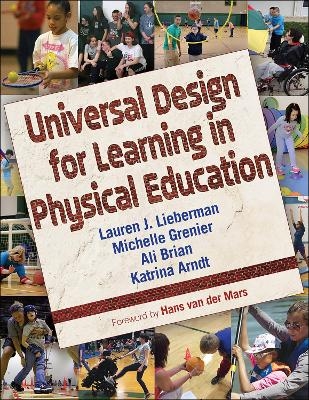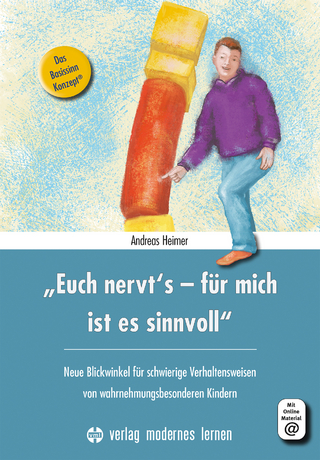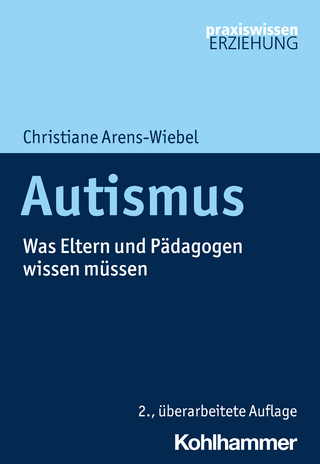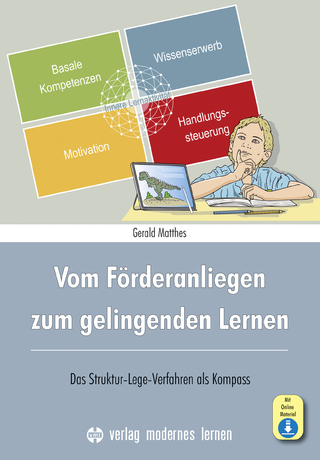
Universal Design for Learning in Physical Education
Human Kinetics (Verlag)
978-1-4925-7499-6 (ISBN)
- Lieferbar (Termin unbekannt)
- Versandkostenfrei innerhalb Deutschlands
- Auch auf Rechnung
- Verfügbarkeit in der Filiale vor Ort prüfen
- Artikel merken
The practice of universal design—of making a product or environment accessible to all individuals—has been around for a long time. But, until now, that practice has never been explored in depth in the field of physical education.
This groundbreaking text provides a much-needed link between universal design and physical education, extending boundaries as it offers physical educators a systematic guide to create, administer, manage, assess, and apply universal design for learning (UDL).
Universal Design for Learning in Physical Education is for all physical educators—those who are or are preparing to become general PE teachers as well as those who are in the field of adapted physical education. This resource offers the following:
Ready-to-use curricular units for grades K-12, with 31 universally designed lessons that demonstrate how teachers can apply UDL in specific content areas (teachers can also use those examples to build their own units and lessons)
Rubrics for the 28 items on the Lieberman–Brian Inclusion Rating Scale for Physical Education (LIRSPE) to help teachers follow best practices in inclusion
Tables, timelines, and paraeducator training checklists to ensure that UDL is effectively delivered from the beginning of the school year
In her earlier text, Strategies for Inclusion, Third Edition, coauthor Lauren Lieberman included a valuable chapter about UDL that focused on detailed, practical steps for making classes inclusive. Universal Design for Learning in Physical Education approaches inclusion from the macro level, providing a comprehensive conceptual model of UDL and how to incorporate it into curriculum planning and teaching methods for K-12 physical education.
Outcomes for Universal Design for Learning in Physical Education are aligned with SHAPE America’s physical education standards and grade-level outcomes. Given that 94 percent of students with disabilities are taught in physical education settings, this text offers highly valuable guidance to general physical educators in providing equal access to, and engagement in, high-quality physical education for all students.
Part I of Universal Design for Learning in Physical Education defines universal design and explains how it relates to physical education. It identifies barriers that teachers may face in adapting UDL to their programs and how to overcome these barriers. It also addresses critical assessment issues and guides teachers in supporting students with severe or multiple disabilities.
Part I also covers advocacy issues such as how to teach students to speak up for their own needs and choices. Readers will gain insight into where their programs excel and where barriers might still exist when they employ the Lieberman–Brian Inclusion Rating Scale, a self-assessment tool that helps measure physical, programmatical, and social inclusion.
Finally, part I reinforces several UDL principles by sharing many examples of how physical educators have applied UDL in their programs.
Part II offers a trove of universally designed units and lesson plans for use across grades K-12, with separate chapters on lessons for elementary, sports, fitness, recreation, and aquatics.
Universal Design for Learning in Physical Education is the first text to delve deeply into the concept of universal design in physical education. As such, it is a valuable resource for all PE teachers—both those leading general classes and adapted classes—to learn how to successfully implement universally designed units and lesson plans that enrich all their students’ lives. The accompanying web resource provides 40 forms, tables, checklists, and a sample lesson plan from the book, as well as a list of websites, books, and laws. These resources are provided as reproducible PDFs for practical use.
Lauren J. Lieberman, PhD, is a distinguished service professor at the College at Brockport, State University of New York. She has taught higher education since 1995 and previously taught at Perkins School for the Blind. She teaches undergraduate and graduate courses in adapted physical education. She is on the editorial board of the Journal of Physical Education, Recreation and Dance (JOPERD). Lieberman has written 20 books on adapted physical education and more than 130 peer-reviewed articles. She started Camp Abilities, an overnight educational sports camp for children with visual impairments. This camp is now replicated in 20 states and eight countries. She was awarded a Global Fulbright Scholarship to replicate Camp Abilities in Ghana, Ireland, and Brazil in fall 2019. Lieberman is past chair of the Adapted Physical Activity Council (APAC). She is currently on the board of the division of recreation and sport for the Association for Education and Rehabilitation of the Blind and Visually Impaired, and she has served on the board of the United States Association of Blind Athletes (USABA). In her leisure time, she enjoys playing Ultimate Frisbee, biking, running, kayaking, hiking, reading, and playing the guitar. Michelle Grenier, PhD, is an associate professor and coordinator of the adapted physical education program at the University of New Hampshire. She has substantial experience working in the field of physical education and utilizing inclusive strategies for students with disabilities. She is an accomplished researcher and is editor of the text Physical Education for Students With Autism Spectrum Disorders. Dr. Grenier is internationally recognized for her work on inclusion and has presented extensively on her research. She is the incoming president of the National Consortium for Physical Education for Individuals with Disabilities (NCPEID). Ali Brian, PhD, is an associate professor in the department of physical education and the director of the Adapted Physical Education/Activity Research lab at the University of South Carolina. Her teaching includes adapted physical education, elementary physical education methods, motor development, assessment and instrumentation, and research methods. Dr. Brian’s research, which includes over 120 presentations and 60 peer reviewed articles, focuses on creating ecologically valid intervention strategies for preschool-aged children with and without disabilities as well as youth with visual impairments. Dr. Brian also focuses on exploring underlying mechanisms that support positive developmental trajectories for health for all children. She is the research director for the Institute of Movement Studies for Individuals with Visual Impairments (IMSVI) and a member of the SHAPE America research counsel, the National Consortium for Physical Education for Individuals with Disabilities (NCPEID) executive committee, and the International Motor Development Research Consortium (I-MDRC) executive committee. Dr. Brian also is on the editorial board for Physical Education and Sport Pedagogy and is an associate editor of Research Quarterly for Exercise and Sport. Katrina Arndt, PhD, is a professor of inclusive education at St. John Fisher College. Prior to entering higher education, she was a paraprofessional and teacher in the public schools in Minneapolis, Minnesota, and the Rochester, New York, area for many years. Arndt’s research interests include support for students with disabilities in inclusive settings, inclusion of students who are deaf-blind, and critical analysis of text and film representations of disability. She is the coauthor of the books Teach Everyone and Picture Inclusion! and the 2019 recipient of Starbridge’s Inclusion Award.
Part I. Foundations of Universal Design
Chapter 1. What Is Universal Design for Learning?
Chapter 2. Applying the Universal Design for Learning Guidelines to Physical Education
Chapter 3. The Time Is Now: UDL in Physical Education
Chapter 4. Assessment, UDL, and Multiple Means of Expression
Chapter 5. Applying the UDL Framework for Students With Severe and Multiple Disabilities
Chapter 6. Advocacy and Transition Planning for Learning
Chapter 7. The Lieberman–Brian Inclusion Rating Scale to Promote Universal Design in Physical Education
Chapter 8. Practical Applications of the Principles of Engagement and Representation
Part II. UDL Guiding Lessons for Physical Education
Chapter 9. Universally Designed Lesson Plans for Elementary PE
Sally Taunton Miedema and Benjamin J. Miedema
Chapter 10. Universally Designed Lesson Plans for Sports
Emily N. Gilbert and Adam Pennell
Chapter 11. Universally Designed Lesson Plans for Fitness
Matthew J. Patey, Jenna Fisher, and Laurie Wengerter
Chapter 12. Universally Designed Lesson Plans for Recreation
Alexandra Stribing
Chapter 13. Universally Designed Lesson Plans for Aquatics
Emily N. Gilbert and Alexandra Stribing
| Erscheinungsdatum | 20.01.2020 |
|---|---|
| Verlagsort | Champaign, IL |
| Sprache | englisch |
| Maße | 216 x 279 mm |
| Gewicht | 612 g |
| Themenwelt | Sozialwissenschaften ► Pädagogik ► Sonder-, Heil- und Förderpädagogik |
| ISBN-10 | 1-4925-7499-6 / 1492574996 |
| ISBN-13 | 978-1-4925-7499-6 / 9781492574996 |
| Zustand | Neuware |
| Haben Sie eine Frage zum Produkt? |
aus dem Bereich


